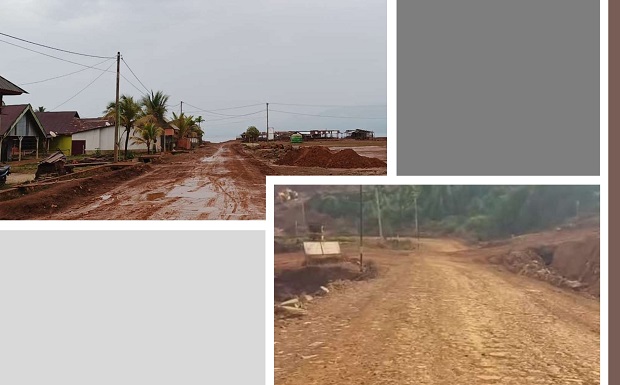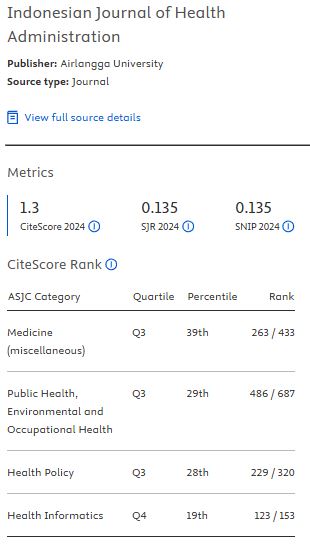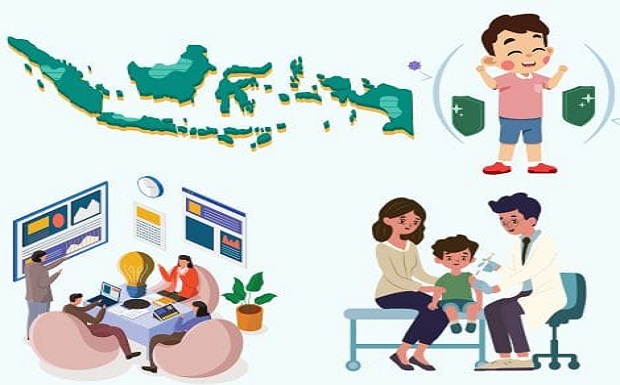RETENTION OF REMOTE PUBLIC HEALTH CENTER DOCTOR IN NORTH KONAWE DISTRICT

Downloads
Background: Remote public health centers (PHCs) have the highest proportion of PHCs without doctors, with Southeast Sulawesi Province ranking fifth in this regard. PHCs serve as the main gateway to health services in rural and remote areas. Despite its high fiscal capacity and provision of support for medical education and incentives, North Konawe District has not succeeded in retaining doctors in its public health centers.
Aims: This study aims to analyze factors that influence the retention of doctors in remote PHCs in the North Konawe District.
Methods: This qualitative study employed a case study design, involving in-depth interviews with 14 informants and a review of six documents.
Results: Factors affecting doctor retention in the North Konawe District include individual factors, work factors, living environment factors, and health system factors.
Conclusion: Doctors in remote PHCs in North Konawe District are Ministry of Health placement doctors working on temporary contracts. Strategies to improve the retention of doctors in remote PHCs include improving living conditions in remote areas, supporting job opportunities for doctors' spouses, recruiting doctors early in their careers, implementing government disincentive policies, building PHCs with official housing, requiring mandatory service for recipients of medical education scholarships, and developing doctor attendance information systems.
Keywords: Doctor, PHC, remote area, retention.
Abelsen, B. et al. (2020) ‘Plan, Recruit, Retain: A Framework for Local Healthcare Organizations to Achieve a Stable Remote Rural Workforce’, Human Resources for Health, 18(1), p. 63. Available at: https://doi.org/10.1186/s12960-020-00502-x.
Agustina, R. et al. (2019) ‘Universal health coverage in Indonesia: concept, progress, and challenges’, The Lancet, 393(10166), pp. 75–102. Available at: https://doi.org/10.1016/S0140-6736(18)31647-7.
Amin, S. (2024) Penempatan Wilayah Terpencil, Formasi PPPK Dokter Tidak Diminati, rri.co.id - Portal berita terpercaya. Available at: https://www.rri.co.id/daerah-3t/526106/penempatan-wilayah-terpencil-formasi-pppk-dokter-tidak-diminati (Accessed: 20 February 2024).
Beck Dallaghan, G.L. et al. (2021) ‘Efforts to Recruit Medical Students From Rural Counties: A Model to Evaluate Recruitment Efforts’, Cureus [Preprint]. Available at: https://doi.org/10.7759/cureus.17464.
Boonluksiri, P. et al. (2018) ‘Community-Based Learning Enhances Doctor Retention’, Education for Health, 31(2), p. 114. Available at: https://doi.org/10.4103/efh.EfH_153_17.
Campbell, D. et al. (2019) ‘Outcomes of a 1-Year Longitudinal Integrated Medical Clerkship in Small Rural Victorian Communities’, Rural and Remote Health [Preprint]. Available at: https://doi.org/10.22605/RRH4987.
Creswell, J.W. (2009) Research Design (Qualitative, Quantitative, and Mixed Methods Approaches). 2nd edn. SAGE Publications, Inc.
Darkwa, E.K. et al. (2015) ‘A qualitative study of factors influencing retention of doctors and nurses at rural healthcare facilities in Bangladesh’, BMC Health Services Research, 15(1), p. 344. Available at: https://doi.org/10.1186/s12913-015-1012-z.
Flores, E.L.L. et al. (2021) ‘Factors Affecting Retention in the Philippine National Rural Physician Deployment Program from 2012 to 2019: A Mixed Methods Study’, BMC Health Services Research, 21(1), p. 1201. Available at: https://doi.org/10.1186/s12913-021-07219-0.
George, A. et al. (2019) ‘Doctor Retention and Distribution in Post-Apartheid South Africa: Tracking Medical Graduates (2007–2011) from One University’, Human Resources for Health, 17(1), p. 100. Available at: https://doi.org/10.1186/s12960-019-0439-4.
Handoyo, N.E., Prabandari, Y.S. and Rahayu, G.R. (2018) ‘Identifying Motivations and Personality of Rural Doctors: A Study in Nusa Tenggara Timur, Indonesia’, Education for Health, 31(3).
Honda, A. et al. (2019) ‘For more than money: willingness of health professionals to stay in remote Senegal’, Human Resources for Health, 17(1), p. 28. Available at: https://doi.org/10.1186/s12960-019-0363-7.
Hou, X. et al. (2016) ‘What Do Health Workers in Timor-Leste Want, Know and Do? Findings from a National Health Labour Market Survey’, Human Resources for Health, 14(1), p. 69. Available at: https://doi.org/10.1186/s12960-016-0164-1.
Joarder, T. et al. (2018) ‘Retaining Doctors in Rural Bangladesh: A Policy Analysis’, International Journal of Health Policy and Management, 7(9), pp. 847–858. Available at: https://doi.org/10.15171/ijhpm.2018.37.
Lee, Y. and Kim, S.Y. (2019) ‘Public Health Law Coverage in Support of the Health-Related Sustainable Development Goals (SDGs) Among 33 Western Pacific Countries’, Globalization and Health, 15(1), p. 29. Available at: https://doi.org/10.1186/s12992-019-0472-z.
Manyazewal, T. (2017) ‘Using the World Health Organization health system building blocks through survey of healthcare professionals to determine the performance of public healthcare facilities’, Archives of Public Health, 75(1), p. 50. Available at: https://doi.org/10.1186/s13690-017-0221-9.
Martha, E. and Kresno, S. (2017) Metode Penelitian Kualitatif untuk Bidang Kesehatan. 1st edn. Depok: PT RajaGrafindo Persada.
Ministry of Health (2023) ‘Surat Edaran Bantuan Biaya Afirmasi Dokter atau Dokter Gigi Tahun 2023’. Available at: https://sibk.codingkoe.com/pengumuman/detailadd/33/18723e1045cdcea6ec0f1d09898afd7f.
Ministry of Health (2025) ‘Transformasi SDM Kesehatan’. Available at: https://kemkes.go.id/id/layanan/transformasi-sdm-kesehatan (Accessed: 20 March 2025).
Mohammadiaghdam, N. et al. (2020) ‘Determining factors in the retention of physicians in rural and underdeveloped areas: a systematic review’, BMC Family Practice, 21(1), p. 216. Available at: https://doi.org/10.1186/s12875-020-01279-7.
Noya, F.C., Carr, S.E. and Thompson, S.C. (2022) ‘Commitments, Conditions and Corruption: An Interpretative Phenomenological Analysis of Physician Recruitment and Retention Experiences in Indonesia’, International Journal of Environmental Research and Public Health, 19(9), p. 5518. Available at: https://doi.org/10.3390/ijerph19095518.
Noya, F.C., Carr, S.E. and Thompson, S.C. (2023) ‘Attracting, Recruiting, and Retaining Medical Workforce: A Case Study in a Remote Province of Indonesia’, International Journal of Environmental Research and Public Health, 1(1), pp. 1–2.
Nugraha, S.M., Manik, C.G. and Su’udi, A. (2020) ‘Analisis Keberadaan Tenaga Kesehatan Non-PNS Di Puskesmas Indonesia’, Jurnal Penelitian dan Pengembangan Pelayanan Kesehatan, pp. 51–63. Available at: https://doi.org/10.22435/jpppk.v4i1.3273.
Nurlinawati, I. and Putranto, R.H. (2020) ‘Faktor-Faktor Terkait Penempatan Tenaga Kesehatan di Fasilitas Pelayanan Kesehatan Tingkat Pertama Daerah Terpencil/Sangat Terpencil’, Jurnal Penelitian dan Pengembangan Pelayanan Kesehatan, pp. 31–38. Available at: https://doi.org/10.22435/jpppk.v4i1.3312.
Rajbangshi, P. et al. (2017) ‘Rural recruitment and retention of health workers across cadres and types of contract in north-east India: A qualitative study’, WHO South-East Asia Journal of Public Health, 6(2), p. 51. Available at: https://doi.org/10.4103/2224-3151.213792.
Sadiq, A.S. and Ahmed, S. (2020) ‘Understanding of Individual Rationality and Institutional Constraints: The Case of Deficiency of Doctors in Rural Bangladesh’, Journal of Global Health Reports, 4. Available at: https://doi.org/10.29392/001c.13385.
Sekretariat Direktorat Jenderal Tenaga Kesehatan (2023) ‘Data Keadaan Dokter Puskesmas Tahun 2018-222’.
Su’udi, A. et al. (2022) ‘Analisis Kondisi Geografis dan Ketersediaan Peralatan di Puskesmas Terpencil/Sangat Terpencil di Indonesia’, Poltekita : Jurnal Ilmu Kesehatan, 16(2), pp. 132–138. Available at: https://doi.org/10.33860/jik.v16i2.1246.
Tambun, S.W.K., Bashabih, M. and Zakaria, Z. (2024) ‘Strategies and Challenges in the Distribution of Public Health Centre Doctors in Indonesia’, Poltekita : Jurnal Ilmu Kesehatan, 17. Available at: https://jurnal.poltekkespalu.ac.id/index.php/JIK/article/view/3653.
Walton-Roberts, M. et al. (2017) ‘Causes, consequences, and policy responses to the migration of health workers: key findings from India’, Human Resources for Health, 15(1), p. 28. Available at: https://doi.org/10.1186/s12960-017-0199-y.
WHO (2021) WHO guideline on health workforce development, attraction, recruitment and retention in rural and remote areas. Update. Geneva: World Health Organization.
Wibowo, A. (2020) Metodologi Penelitian Praktis. 1st edn. Jakarta: RajaGrafindo Persada.
Witthayapipopsakul, W. et al. (2019) ‘Equity of Health Workforce Distribution in Thailand: An Implication of Concentration Index’, Risk Management and Healthcare Policy, Volume 12, pp. 13–22. Available at: https://doi.org/10.2147/RMHP.S181174.
Zhu, A. et al. (2019) ‘Analysis of Strategies to Attract and Retain Rural Health Workers in Cambodia, China, and Vietnam and Context Influencing Their Outcomes’, Human Resources for Health, 17(1), p. 2. Available at: https://doi.org/10.1186/s12960-018-0340-6.
Copyright (c) 2025 Sondang Whita Kristina Tambun, Masyitoh Bashabih

This work is licensed under a Creative Commons Attribution-ShareAlike 4.0 International License.
1. As an author you (or your employer or institution) may do the following:
- make copies (print or electronic) of the article for your own personal use, including for your own classroom teaching use;
- make copies and distribute such copies (including through e-mail) of the article to research colleagues, for the personal use by such colleagues (but not commercially or systematically, e.g. via an e-mail list or list server);
- present the article at a meeting or conference and to distribute copies of the article to the delegates attending such meeting;
- for your employer, if the article is a ‘work for hire', made within the scope of your employment, your employer may use all or part of the information in the article for other intra-company use (e.g. training);
- retain patent and trademark rights and rights to any process, procedure, or article of manufacture described in the article;
- include the article in full or in part in a thesis or dissertation (provided that this is not to be published commercially);
- use the article or any part thereof in a printed compilation of your works, such as collected writings or lecture notes (subsequent to publication of the article in the journal); and prepare other derivative works, to extend the article into book-length form, or to otherwise re-use portions or excerpts in other works, with full acknowledgement of its original publication in the journal;
- may reproduce or authorize others to reproduce the article, material extracted from the article, or derivative works for the author's personal use or for company use, provided that the source and the copyright notice are indicated.
All copies, print or electronic, or other use of the paper or article must include the appropriate bibliographic citation for the article's publication in the journal.
2. Requests from third parties
Although authors are permitted to re-use all or portions of the article in other works, this does not include granting third-party requests for reprinting, republishing, or other types of re-use.
3. Author Online Use
- Personal Servers. Authors and/or their employers shall have the right to post the accepted version of articles pre-print version of the article, or revised personal version of the final text of the article (to reflect changes made in the peer review and editing process) on their own personal servers or the servers of their institutions or employers without permission from JAKI;
- Classroom or Internal Training Use. An author is expressly permitted to post any portion of the accepted version of his/her own articles on the author's personal web site or the servers of the author's institution or company in connection with the author's teaching, training, or work responsibilities, provided that the appropriate copyright, credit, and reuse notices appear prominently with the posted material. Examples of permitted uses are lecture materials, course packs, e-reserves, conference presentations, or in-house training courses;























